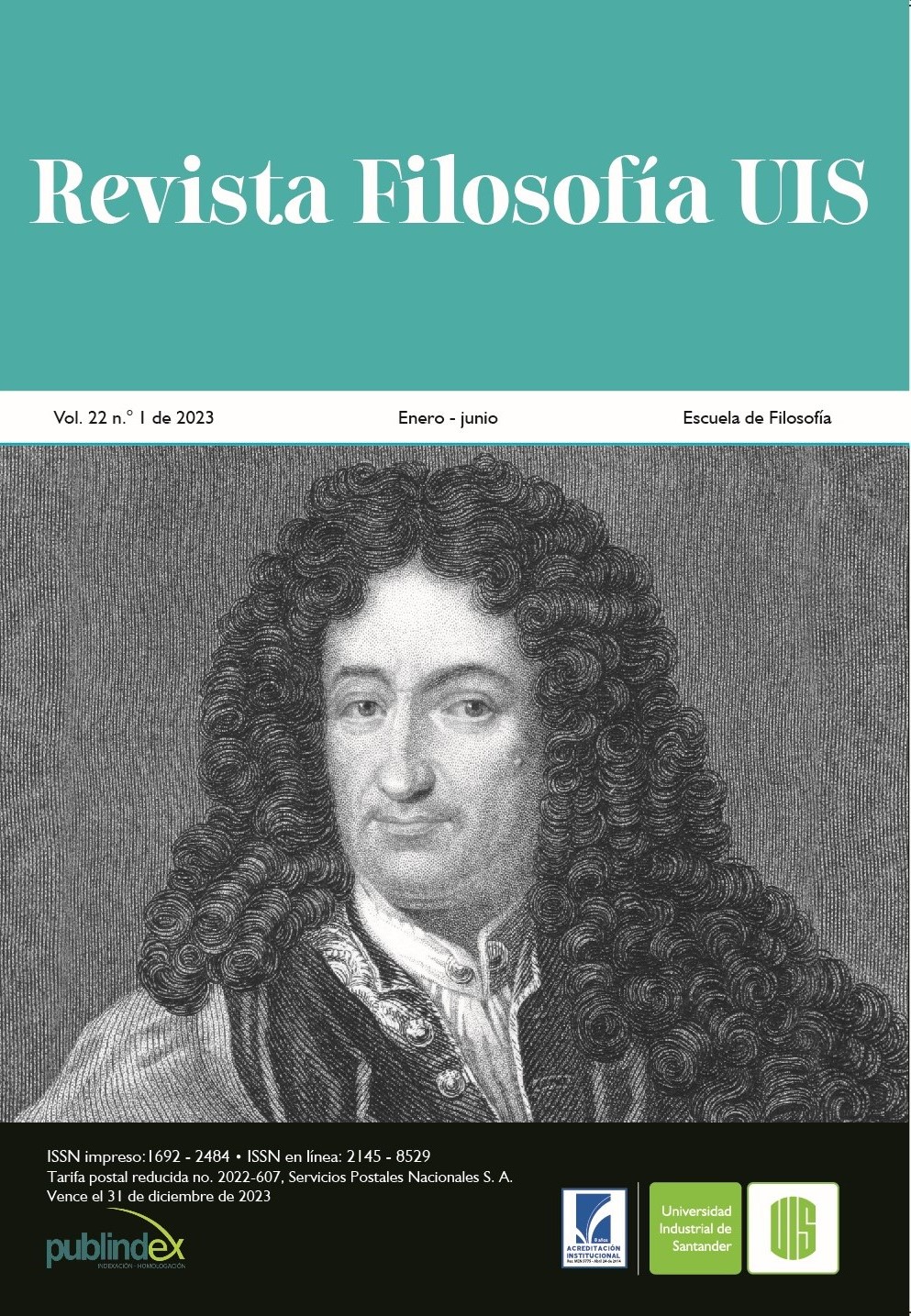Publicado 02-01-2023
Palabras clave
- humanismo,
- transhumanismo,
- bioconservadores,
- bioliberales,
- cyborg
- antropoceno ...Más
Cómo citar
Derechos de autor 2023 Revista Filosofía UIS

Esta obra está bajo una licencia internacional Creative Commons Atribución 4.0.
Resumen
El objetivo de este texto es mostrar la tensión que existe entre dos proyectos: el humanista y el transhumanista. Aquí se expondrá la tesis de que el proyecto transhumanista puede proponer una vida que vale la pena ser vivida desde la mejora tecnológica. Para lograr defender esta tesis se propondrá como itinerario examinar la tesis de la excepcionalidad humana y la propuesta transhumanista; las posturas bioconservadoras y bioliberales y la postulación del cyborg en el contexto del antropoceno como proyecto de un transhumanismo moderado.
Descargas
Citas
- Aristóteles (2014). Física. Gredos.
- Berardi, F. (2017). Fenomenología del fin: Sensibilidad y mutación conectiva (A. López Gabrielidis, trad.). Caja Negra.
- Bostrom, N. (2005). In Defense of Posthuman Dignity. Bioethics, 19(3), 202-214. https://doi.org/10.1111/j.1467-8519.2005.00437.x
- Bostrom, N. (2014a). Introduction—The Transhumanist FAQ: A General Introduction. En Transhumanism and the Body: The World Religions Speak (pp. 1-17). Palgrave Macmillan US. https://doi.org/10.1057/9781137342768_1
- Bostrom, N. (2014b). Superintelligence: Paths, dangers, strategies (1st. Ed.). Oxford University Press.
- Castro-Gómez, S. (2012). Sobre el concepto de antropotécnica en Peter Sloterdijk. Revista de Estudios Sociales, (43), 63-73. https://doi.org/10.7440/res43.2012.06
- Crutzen, P., & Stoermer, E. (2000). The “Anthropocene”. Global Change Newsletter, 41, 17-18.
- Diéguez, A. (2021a). Cuerpos inadecuados el desafío transhumanista a la filosofía. Herder. https://www.jstor.org/stable/10.2307/j.ctv1prsscc
- Diéguez, A. (2021b). Transhumanismo. Herder Editorial.
- Foucault, M. (1999). Entre filosofía y literatura: Obras esenciales. Ediciones Paidós.
- Fukuyama, F. (2003). Our posthuman future: Consequences of the biotechnological revolution. Picador.
- Gehlen, A. (1993). Antropología filosófica: Del encuentro y descubrimiento del hombre por sí mismo. Paidós.
- Haraway, D. (1990). A Manifesto for Cyborgs: Science, Technology, and Socialist Feminism in the 1980s. En L. J. Nicholson (Ed.), Feminism/postmodernism (pp. 190-233). Routledge.
- Haraway, D. (2015). Anthropocene, Capitalocene, Plantationocene, Chthulucene: Making Kin. Environmental Humanities, 6(1), 159-165. https://doi.org/10.1215/22011919-3615934
- Huxley, J. (1957). New Bottles for New Wine: Essays. Chatto & Windus.
- Huxley, J. (1927). Religion without revelation. Harper & Brothers.
- Kurzweil, R. (2005). The singularity is near: When humans transcend biology. Viking.
- More, M. (1990). Transhumanism: Towards a Futurist Philosophy. Extropy, 6. http://fennetic.net/irc/extropy/ext6.pdf
- Nagel, T. (2003). ¿Cómo es ser un murciélago? En M. Ezcurdia & O. Hansberg (Eds.), Sensaciones (pp. 45-63). UNAM, Instituto de Investigaciones Filosóficas.
- Platón (1992). Alcibíades I. En Diálogos VII. Gredos.
- Rivas San Martín, F. (2019). Internet, mon amour: Infecciones queer/cuir entre digital y material (V. Montero & N. Cuello, Eds.1ra. Edición). ÉCFRASIS.
- Rivera Novoa, Á. (2020). Mente extendida y transhumanismo: ¿Qué tan humana es la mente de un cyborg? En O. M. Donato Rodríguez & D. M. Muñoz González (Eds.). Redefinir lo humano en la era técnica perspectivas filosóficas (pp. 75-89). Universidad Libre.
- Roache, R., & Clarke, S. (2009). Bioconservatism, Bioliberalism, and the Wisdom of Reflecting on Repugnance. Monash Bioethics Review, 28, 1-21. https://doi.org/10.1007/BF03351306
- Schaeffer, J.-M. (2009). El fin de la excepción humana. (V. Goldstein, trad.). Fondo de Cultura Económica.
- Sharon, T. (2013). Human nature in an age of biotechnology: The case for mediated posthumanism. Springer Berlin Heidelberg.
- Sloterdijk, P. (2008). En el mismo barco. Siruela.
- Sloterdijk, P. (2011). Sin salvación: Tras las huellas de Heidegger. Akal.
- Steyerl, H. (2014). Los condenados de la pantalla (M. Expósito, trad.; 1a. Ed.). Caja Negra.
- Trischler, H. (2016). The Anthropocene: A Challenge for the History of Science, Technology, and the Environment. NTM Zeitschrift Für Geschichte Der Wissenschaften, Technik Und Medizin, 24(3), 309–335. https://doi.org/10.1007/s00048-016-0146-3
- Warwick, K. (2013). Cyborgs. En A. L. C. Runehov & L. Oviedo (Eds.), Encyclopedia of Sciences and Religions (pp. 570–576). Springer Netherlands. https://doi.org/10.1007/978-1-4020-8265-8_1210
- Warwick, K. (2014). The Cyborg Revolution. NanoEthics, 8(3), 263–273. https://doi.org/10.1007/s11569-014-0212-z
- Wittgenstein, L. (2009). Wittgenstein I: Tractatus Lógico-Philosophicus, Investigaciones Filosóficas, Sobre la certeza. Gredos.

